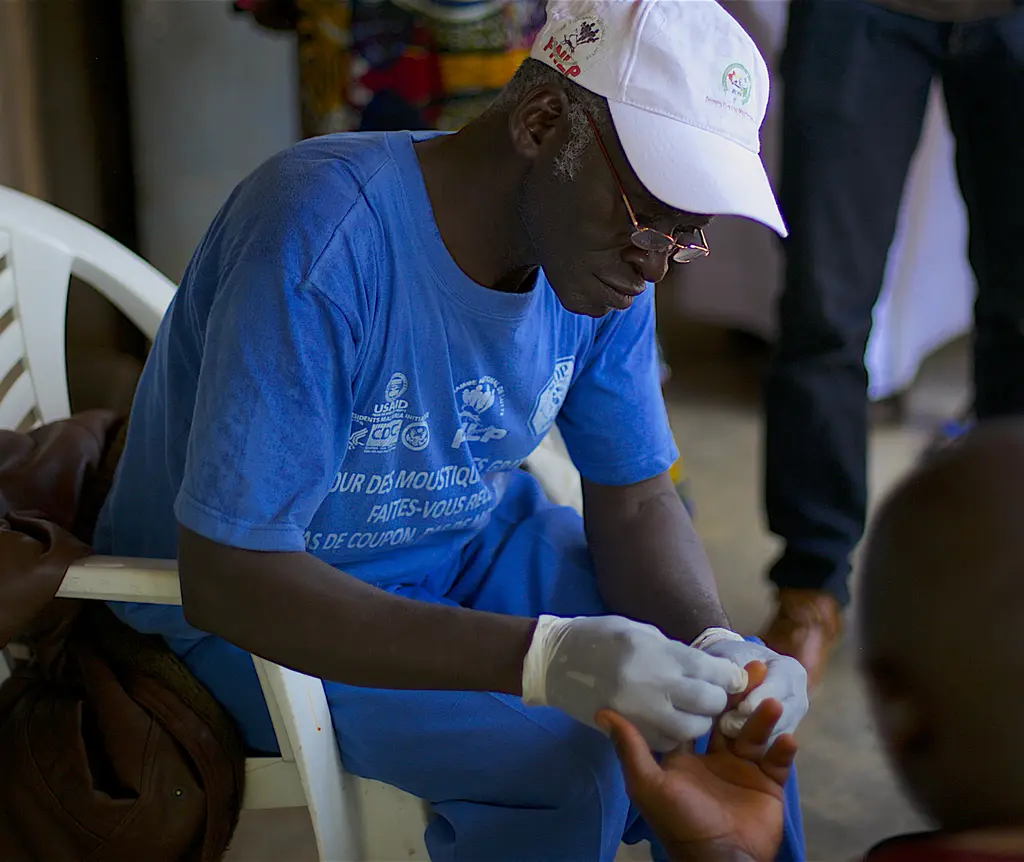Insights
The Benefits of Integrated Health Services

Generating evidence for the economic and social benefits of integrated health services
Emerging evidence shows that integrated health services can deliver strong outcomes across health conditions. Global health donors like PEPFAR and the Global Fund are increasingly moving toward holistic, patient-centered, and integrated service delivery approaches. The global commitment to integration is also growing in recognition of its ability to advance universal health coverage and health equity.
RTI is helping to build the evidence base around integrated health services, including by reviewing their performance to date and by collecting primary data to assess their cost-effectiveness. As global health budgets and health systems are increasingly stretched, this type of information can help leaders make informed decisions about the most effective approaches.
A recent literature review, which RTI conducted in partnership with the NCD Alliance, a global advocacy organization for people living with noncommunicable disease (NCD), found that integrated HIV and NCD services do deliver strong health outcomes. However, we also found that the evidence on the cost-effectiveness of integrated services is light and needs more research. Generating this evidence is important because it enables legislators, health authorities, and patient advocacy groups to better understand the theory and practice of integrated care.
To help build the evidence base around integrated health services, RTI’s Center for Global Noncommunicable Diseases is working on multiple fronts: reviewing evidence on integrated health services’ performance to date while also collecting primary data of ongoing trials of integrated HIV-NCD programs. In this blog post, we explore the benefits of integrated services, the evidence of their impact, and RTI’s efforts to assess the cost-effectiveness of integrated service delivery.
Health service integration in action: HIV services
The World Health Organization (WHO) defines integration as a coherent set of methods and models that creates connectivity, alignment, and collaboration within and across the cure and care sectors in health. The WHO posits that this integration needs to take place across the clinical, functional, organizational, and service delivery aspects of a health system.
A forthcoming internally funded RTI research project found that integration of services with HIV care is one of the most frequently studied types of integration. Health researchers, program implementers, government authorities, and care providers have many reasons to see potential in integrated HIV services. First, integrated services offer an opportunity to treat patients holistically across multiple conditions, an important attribute since there is high prevalence of comorbidities like cardiovascular disease, cancers, and depression in people living with HIV.
Another factor is the strong investment in infrastructure for HIV services from PEPFAR, the largest global program devoted to a single disease. Many countries have leveraged PEPFAR funding to develop robust supply chains, data systems, and networks of health facilities for HIV care. These networks often connect to communities that are geographically remote or otherwise marginalized and have low access to other health services.
HIV patients also make regular visits to health providers over long-time spans as part of antiretroviral treatment. This creates opportunities to simultaneously provide care for NCDs, since they are also chronic conditions. In addition, when treatment centers become chronic care facilities as opposed to dedicated HIV care facilities, patients may benefit from reduced stigma since they can access care without implicitly disclosing their HIV status. This may generate greater incentive for patients to maintain contact with health providers.
Studying evidence on outcomes of integrated health services
RTI worked with the NCD Alliance to conduct a systematic literature review of HIV and NCD service integration. The "Spending Wisely" policy research report resulting from this study describes HIV-NCD service delivery integration programs across the continuum of care in low- and middle-income countries, and summarizes evidence on the costs, impact, and cost-effectiveness of the identified models.
We reviewed studies on 28 HIV-NCD programs across 16 countries in Africa and Asia that had rigorous evaluation designs to assess program outcomes and/or evidence comparing the costs of integrated and non-integrated programs. Integration models spanned the entire continuum of care, and the majority of programs delivered services across multiple settings—such as within the home, communities, health facilities, and remote settings.
Key findings included:
- Among the programs identified, mental health and substance use disorders were the most common conditions integrated with HIV services. Few studies had comprehensively evaluated outcomes of HIV integration with core NCDs such as cardiovascular disease, diabetes, respiratory conditions, or cancer.
- Eighty-five percent of studies that assessed the clinical effectiveness of integrated HIV-NCD services found that HIV outcomes either improved or did not worsen and NCD outcomes significantly improved.
- Existing evidence of cost-effectiveness is thin, but it indicates that integrated HIV-NCD programs can save resources for both patients and health systems. Patients stand to benefit the most, and the extra costs to the health system are relatively small compared to the improvements in health outcomes.
Further study of integrated service delivery can drive continued momentum for this innovative health approach. Researchers, donors, and policymakers must work together to close this evidence gap and fulfill the potential of integrated care to contribute to the achievement of universal health coverage.
Generating new evidence in Uganda
To help close the evidence gap on the cost-effectiveness of HIV-NCD integration, RTI is developing instruments to track costs of integrated hypertension services. In Uganda, we’re deploying these instruments for PULESA, a cluster randomized trial assessing integration of hypertension services into HIV clinics in Kampala and Wakiso Districts. The program is a collaboration between Infectious Diseases Research Collaboration Uganda, Makerere University, University of Washington, and Yale University, and is funded by the U.S. National Institutes of Health (NIH).
RTI is leading research to assess the costs of basic and intensive forms of integrated hypertension service delivery. Costing instruments developed by RTI and colleagues are being deployed throughout the study’s five-year duration, including an out-of-pocket survey to assess costs to patients, a patient time- and motion-tracking tool, a facility-based cost survey, and instruments to track health provider training costs. These costing instruments are also being deployed by other NIH-funded trials in Botswana, Mozambique, and South Africa. Post implementation, the PULESA team will compare costs to health outcomes generated by the integrated services to assess the program’s cost-effectiveness.
As a research institute committed to quality implementation of global development programs, RTI will continue to produce scientific evidence to support the growing enthusiasm for integrated health service delivery around the world. With greater evidence on how, why, and what works for integrated health services, decision-makers and advocates will be better equipped to increase the efficiency and effectiveness of health systems to extend care to all who need it.
Disclaimer: This piece was written by Lily Morrell (Health Policy Analyst), Brian Hutchinson (Research Public Health Analyst), and Gavin Allman (Health Policy Analyst, Global Center for Noncommunicable Diseases) to share perspectives on a topic of interest. Expression of opinions within are those of the author or authors.


